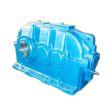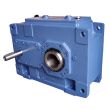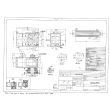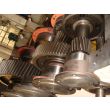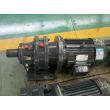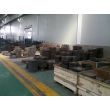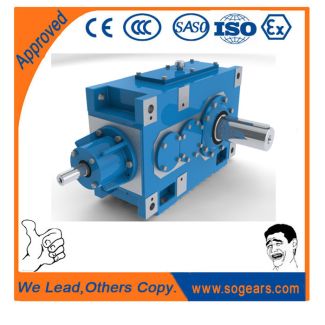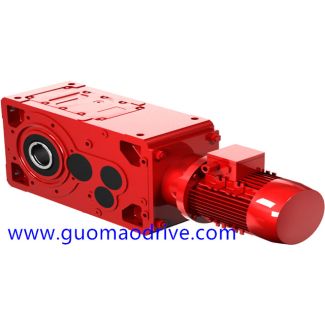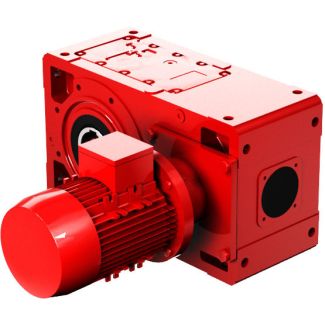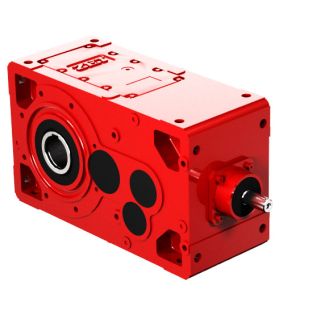H4-DH21-B ed as specified in the operating instructions Rat Helical speed reduction gearbox H4
In stock
SKU
H4-DH21-B
$143,571.43
Flender/Flender Gear Units/Helical speed reduction gearbox H4
imposed on shaft parallel to the shaft axis. Such force is called thrust load. It is often encountered on shafts driving mixers, fans, blowers and similar machines. When thrust load acts on speed reducer, you must be sure that the
driving mixers, fans, blowers and similar machines. When thrust load acts on speed reducer, you must be sure that the  thrust load rating of the reducer is high enough that its shafts and bearings can absorb the load. MECHANICAL RATING
thrust load rating of the reducer is high enough that its shafts and bearings can absorb the load. MECHANICAL RATING  The maximum power or torque that speed reducer can transmit, based on the strength and durability of its components, is
The maximum power or torque that speed reducer can transmit, based on the strength and durability of its components, is  its mechanical rating. Obviously, the reducer may be rated no higher than the strength or durability of its weakest component. Reducers typically have safety margin of two to three on their mechanical ratings. Thus, reducer can withstand momentary overloads of 2-3% of its mechanical rating during startup or other brief overload situations. THERMAL RATING The maximum power or torque that speed reducer can transmit continuously, based on its ability to dissipate heat generated by friction, is called its thermal rating. PRIME MOVER The machine that provides power to drive is its prime mover. The most frequently encountered prime movers include electric motors, internal combustion engines, hydraulic motors and air motors. The type of prime mover used can affect the speed reducer during operation. For example, an electric motor runs relatively smoothly in comparison to an internal combustion engine. MOUNTING POSITION The relationship of the input and output shafts relative to the floor line.INPUT HORSEPOWER The amount of power applied to the input shaft of reducer by the prime mover is its input horsepower. It is often used as selection basis for power transmission components, and it appears in the rating tables of drive manufacturers published data. Remember that input horsepower ratings represent the maximum amount of power that the reducer can safely handle. OUTPUT HORSEPOWER The amount of power avail able at the output shaft of reducer is its output horse
its mechanical rating. Obviously, the reducer may be rated no higher than the strength or durability of its weakest component. Reducers typically have safety margin of two to three on their mechanical ratings. Thus, reducer can withstand momentary overloads of 2-3% of its mechanical rating during startup or other brief overload situations. THERMAL RATING The maximum power or torque that speed reducer can transmit continuously, based on its ability to dissipate heat generated by friction, is called its thermal rating. PRIME MOVER The machine that provides power to drive is its prime mover. The most frequently encountered prime movers include electric motors, internal combustion engines, hydraulic motors and air motors. The type of prime mover used can affect the speed reducer during operation. For example, an electric motor runs relatively smoothly in comparison to an internal combustion engine. MOUNTING POSITION The relationship of the input and output shafts relative to the floor line.INPUT HORSEPOWER The amount of power applied to the input shaft of reducer by the prime mover is its input horsepower. It is often used as selection basis for power transmission components, and it appears in the rating tables of drive manufacturers published data. Remember that input horsepower ratings represent the maximum amount of power that the reducer can safely handle. OUTPUT HORSEPOWER The amount of power avail able at the output shaft of reducer is its output horse| Model Type | Helical speed reduction gearbox H4 |
|---|---|
| Gear Type | Helical Gear |
| Weight (kg) | 6700.000000 |
| Ratio Range | 1 : 100…355 |
| Low Speed Output | Hollow shaft with shrink disk |
| Nominal Torque | 420000 Nm |
| Mounting Arrangements | Horizontal mounting position |
| Manufacturer | Flender ATB-Loher |
| Country of Manufacture | Nicaragua |
| Data Sheet & Drawings | H4-DH21-B ed as specified in the operating instructions Rat Helical speed reduction gearbox H4 |

